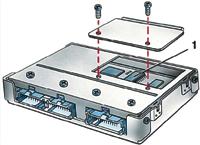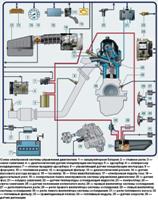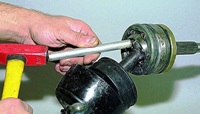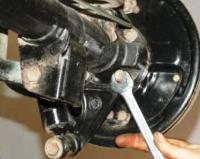Change the brake fluid in the hydraulic brake drive every two years, regardless of the vehicle's mileage
Before changing the brake fluid, check the tightness of the hydraulic actuator and troubleshoot
It is recommended to replace the brake fluid with an assistant, having previously installed the car on an inspection ditch, overpass or lift.
The sequence of fluid replacement in the brake mechanisms:
- - back right;
- - front left;
- - back left;
- - front right.
Do not reuse the fluid drained from the system: it is contaminated, saturated with air and moisture.
Always add only new fluid to the system of the brand that was filled before.
Brake fluid is hygroscopic (absorbs moisture from the surrounding air), so it should not be stored in an open container.
You will need: 8 key, brake fluid, rubber or transparent hose, transparent vessel.
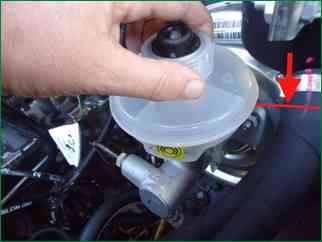
Unscrew the cover of the hydraulic reservoir with the level sensor float.
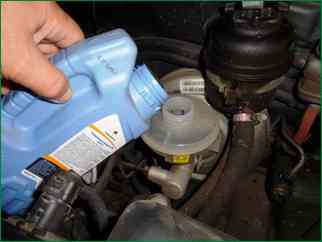
Pour clean brake fluid into the reservoir up to the lower edge of the filler neck.
Remove the front wheels.
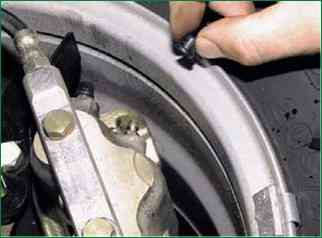

Clean the air release valves from dirt and remove the protective caps of the valves of the working cylinders of the front and rear brake mechanisms.
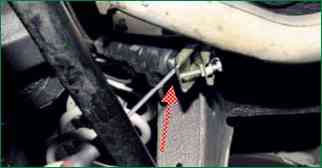
If you are working on a lift (the rear wheels are off), first unlock the rear brake pressure regulator by inserting a screwdriver between the bracket and the screw.
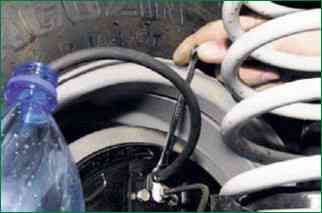
Place the rubber hose over the right rear brake bleed valve and immerse the end of the hose in a clean, clear container.
The assistant should sharply press the brake pedal 4-5 times (with an interval between pressing 1-2 s), then keep the pedal depressed.
Unscrew the air release valve 12-34 turns. Brake fluid will begin to flow out of the hose.
In this case, the brake pedal should smoothly reach the stop.
As soon as the liquid stops flowing, close the air release valve.
Constantly monitor the level of fluid in the reservoir, not allowing it to drop to the lower edge of the reservoir mounting bracket, and add new brake fluid if necessary to prevent air from entering the hydraulic drive. This will ensure that the old fluid is gradually replaced by the new one without draining the hydraulic system.
When changing the brake fluid in the brake mechanisms of the front wheels, use both valves: both upper and lower.
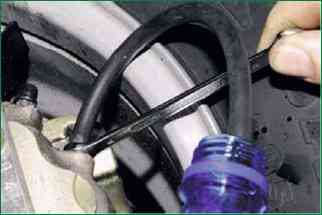
In the same way, change the brake fluid in the left front brake and then in the second circuit (first in the left rear brake, then in the right front). Press the brake pedal several times.
In this case, the stroke and resistance of the pedal must be constant with each press.
If these conditions are not met, then air has entered the brake system and it needs to be bled.
Repeat steps 8-11 until the fluid in the drive is completely replaced (clean fluid without air bubbles should come out of the hose).
After changing the brake fluid, be sure to put protective caps on the bleed valves.
Add brake fluid to a level between the "MIN" and "MAX" marks on the side of the reservoir. Wrap the lid tank.
Check the quality of the work done: press the brake pedal several times, while the pedal stroke and the force on it should be the same each time you press it.
If this is not the case, bleed the hydraulic brake system.

Check the operation of the low brake fluid level sensor installed in the reservoir cap.
To do this, turn on the ignition and press the button on the tank cap - the control lamp in the instrument cluster should light up.







